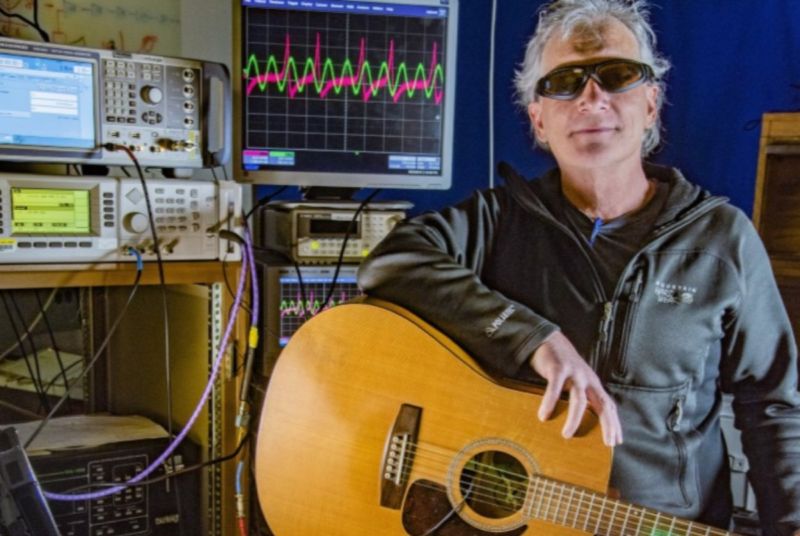
J. Burras/NIST
Scientists at the National Institute for Standards and Technology in Gaithersburg, Maryland have bought us one step closer to “atomic radio” by using an atom-based receiver to make a stereo recording of music streamed into the laboratory—namely, Queen’s “Under Pressure.” They described their work in a new paper in AIP Advances.
So-called “Rydberg atoms” are atoms that are in an especially excited state well above their ground (lowest-energy) state. This makes them especially sensitive to passing electric fields, like the alternating fields of radio waves. All you need is a means of detecting those interactions to turn them into quantum sensors—like a laser. That means, in principle, that Rydberg atoms could receive and play back radio signals.
This isn’t the first time Rydberg atoms have been used for audio recording. Last September, we reported on the development of a new type of antenna capable of receiving signals across a much wider range of frequencies (more than four octaves) that is highly resistant to electromagnetic interference. Scientists at Rydberg Technologies zapped vapor cells filled with excited cesium atoms with laser light tuned to just the right critical frequency, essentially saturating the atoms to prevent them from absorbing any more light. The critical frequency at which this transition happens will change in response to a passing radio wave, so the light from that second laser beam will flicker in response.
Basically, the vapor cell turns into a purely optical radio wave detector with no need for any wires or circuitry, and capable of measuring pulsed and modulated RF fields. It’s also less vulnerable to electromagnetic interference, and can detect a wider range of signals. The Rydberg scientists tested their concept with AM and FM microwaves to transmit recordings of various team members singing “Mary Had a Little Lamb”—a nod to Thomas Edison, who sang the same song when he invented the phonograph in 1877.
“Atom-based antennas might give us a better way of picking up audio data in the presence of noise, potentially even the very weak signals transmitted in deep space communications,” said Chris Holloway, lead author on this latest paper. He and his colleagues have spent the last six years figuring out how to use atoms to directly measure electric fields.
When they finally succeeded, Holloway thought it would be a fun proof of concept to use their experimental setup to make a recording—initially, just a short track of Holloway noodling on an acoustic guitar (which you can hear below). The team followed that up by recording Queen’s “Under Pressure” as it streamed into the lab—a good way to find out if their system could handle lead singer Freddy Mercury’s impressive four-octave range.
How did they do it? Pretty much the same way cell phones encode signals onto radio waves for transmission and receiving, except the NIST team was able to create a stereo recording by using one atomic species to record the instrumental track, and another to record the vocals, using different laser frequencies. Per Eva Amsen, writing at Forbes:
In the setup they used, two different guitars were each hooked up to an amplifier linked to a signal generator to produce a different AM frequency output for each guitar. These signals were then sent to a tube containing both 133Cs and 85Rb atoms. Each of the atom types picked up one of the frequencies and passes on the signal to a set of lasers. By processing the output from the different sets of lasers, each guitar sound could be isolated independently.
The recordings aren’t going to challenge the dominance of digital recording any time soon, since they are of much lower sound quality, more akin to an old vinyl record. That said, “My vision is to cut a CD in the lab—our studio—at some point and have the first CD recorded with Rydberg atoms,” said Holloway—if only as a fun scientific curiosity. But one day, the researcher believes this type of atomic sensing could help improve secure communications. “Atom-based antennas might give us a better way of picking up audio data in the presence of noise, potentially even the very weak signals transmitted in deep space communications,” he said.
DOI: AIP Advances, 2019. 10.1063/1.5099036 (About DOIs).
Không có nhận xét nào:
Đăng nhận xét